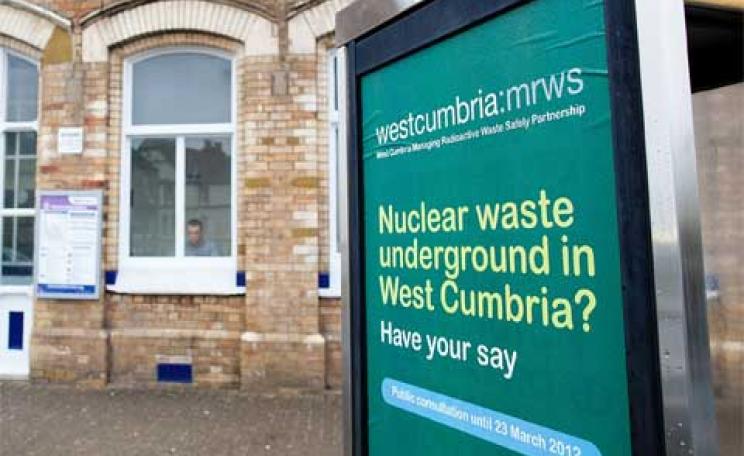Survivors of the Fukushima disaster have spent on average five months in government-provided temporary shelters. Copyright: Pamela Ravasio
The triple disaster of the earthquake, tsuanami and Fukushima nuclear station meltdown in March 2011, saw intense media focus on the safety of nuclear power. Another of the repercussions not much - if at all - considered in depth by the international media is the social dimension of the disaster: the massive upheaval it brought to local communities.
To someone like me who has lived in, and has had family ties with Japan, an overriding question remains how the disaster affected these communities. The triple disaster has highlighted and compounded such pre-existing underlying issues as falling birth rates, the fragmenting of the family unit, and the shrinking of local communities. During the five years before the disaster, birth rates had been steadily falling in Japan. The now daily concerns about radiation levels, safe food and water have left many young couples unwilling to take on the perceived risky task of raising children in a dangerous environment.
The prevalent trend during the pre-quake years, brought about primarily by lack of economic development in local communities, had been for young people to leave their villages to seek higher-paid jobs in the larger towns and cities, only returning home for holidays and other celebrations.The immediate consequence of this has been the decline of village communities. The longer-term consequence will be the erosion of regional identity, at a time when, more than ever, communities affected by the earthquake need their younger generation.
The March disaster divided families. Mothers and children were forced to move to towns and cities, sometimes 200 - 300 miles away, where securing basic day-to-day services is easier than in their earthquake-stricken communities.  Fathers, many bound by loyalty to their families and too, by the need to meet financial commitments, including repaying mortgages on homes that have been destroyed, have remained behind in their villages. Survivors of the disaster have spent on average five months in government-provided temporary shelters. Temporary accommodation was allocated in a lottery deemed the fairest way of distributing accommodation. Many have found themselves unable to face this additional upheaval compounding the fragmenting of communities, brought about by the failure of governmental officials to consider keeping people from the same area together. For others, tracing and finding other survivors from their locales has been crucial to ensuring togetherness and stability. To this end, a group of people have joined in putting down a fifty per cent deposit on their temporary accommodation to ensure they have more say in how the buildings were built.
Fathers, many bound by loyalty to their families and too, by the need to meet financial commitments, including repaying mortgages on homes that have been destroyed, have remained behind in their villages. Survivors of the disaster have spent on average five months in government-provided temporary shelters. Temporary accommodation was allocated in a lottery deemed the fairest way of distributing accommodation. Many have found themselves unable to face this additional upheaval compounding the fragmenting of communities, brought about by the failure of governmental officials to consider keeping people from the same area together. For others, tracing and finding other survivors from their locales has been crucial to ensuring togetherness and stability. To this end, a group of people have joined in putting down a fifty per cent deposit on their temporary accommodation to ensure they have more say in how the buildings were built.
In Japan reliance on government leadership and guidance has always been great. Since the disaster there has been a loss of faith in information received from the government, and in its ability to respond satisfactorily. Criticism has driven groups of people to take the lead in problem solving. How long families and communities will continue living in temporary accommodation is still unclear. Most worrying are the long-term effects, especially the loss of regional traditions and cultures. Nevertheless, despite the many challenges facing villages affected by the earthquake, there have been inspirational stories of how local communities are being brought together again.
 Grounds for hope
Grounds for hope
In Minamisanriku, Miyagi Prefecture a group of farmers who had their farms completely destroyed have been brought together by a charity operating in the area, (Eastern Japan Earthquake and Tsunami Relief Aid (OGA), a grassroots NGO. Thanks to OGA, the farmers have been able to replant a small holding (pictured left), a little way up the mountains surrounding their village. The tsunami that engulfed their village tainted the soil with salt water, making growing anything near impossible.
Since the disaster, OGA has been on the ground, working to empower communities and to help generate growth. To date, OGA continues to deliver thousands of kilos of food, water, building materials and importantly, funding. The charity is providing stability in Minamisanriku - the one vital essential that communities affected by the triple disaster so desperately need. Hugely welcome has been a Community Centre, where people can reconnect and rebuild a sense of community. The centre provides opportunities for sharing experiences, for studying, for learning and reading, for watching movies, for sharing experiences, and for staging events.
The locals have welcomed the Centre, which they use daily. The Centre aims to be self-sustaining, to provide incomes for people who work in it and too, to continue to provide education and skills training and development. The overriding challenge remains that of social regeneration. Homes can be rebuilt; rebuilding human relationships is not so easy, though. Japan is a country built on people, welded together by the perception of the unifying force of ancestors.
Sad end to brave action
The following brief, sad, but inspirational tale of the fate of one young woman when the quake struck gives some idea of the example ancestors can provide. The young woman, who had recently completed her senmongakku martial arts training, had returned to Minamisanriku, her home village, eight months before the earthquake. On the day of the earthquake, she was on duty in the area's emergency service station, charged with alerting nearby villages to any danger.
 The station, four metres high, was located several kilometres inland (the area pictured left). When the quake struck she immediately began broadcasting the signal, warning villagers to flee. She stayed at her post, despite the fact that she could see the advancing ten-metre high wave. The wave struck the village, engulfing the station and the surrounding area. Her body remains unaccounted for. Perhaps one day she will be found. For now though, her sacrifice can be taken for as clear an illustration as any of the importance Japanese people place on the well-being of the group.
The station, four metres high, was located several kilometres inland (the area pictured left). When the quake struck she immediately began broadcasting the signal, warning villagers to flee. She stayed at her post, despite the fact that she could see the advancing ten-metre high wave. The wave struck the village, engulfing the station and the surrounding area. Her body remains unaccounted for. Perhaps one day she will be found. For now though, her sacrifice can be taken for as clear an illustration as any of the importance Japanese people place on the well-being of the group.
Pride and resilience
As time draws away from the disaster it is leaving behind a sense of pride and great resilience. New forms of working with people and of providing mutual support are building strength and setting future goals. No longer is reliance on the government paramount. People are learning to take charge and as they do so an economic reality of micro-entrepreneurship is coming into being. A complete picture of Tohoku's future is yet unclear. One thing seems certain, though. As communities grow and unite in confidence, as they mature into taking decisions for themselves, instead of placing too great a reliance on the government, as new projects and enterprises are seeded and supported, a strong foundation for the future is being laid down.
Ngaire Takano has spent 15 years working with groups in Japan and is now working with a social enteprise in Tohoku region. This comment was co-written by her and her son Hiroki. For more information on the OGA, see www.ogaforaid.org
All images appear courtesy of Pamela Ravasio. A sustainable fashion expert, Pamela has worked with OGA and spent a week with them in January 2012. For more information, go to shirahime.ch
| READ MORE... | |
 |
NEWS ANALYSIS Nuclear special Battlelines drawn as Cumbrian residents square up over nuclear waste site A decision looms on whether - and where - to build the UK's first deep disposal for nuclear waste. Two borough councils in Cumbria have 'volunteered' - but can the communities be convinced? Matilda Lee reports |
 |
COMMENT Nuclear special Fukushima: the social impact of a nuclear disaster The earthquake and nuclear meltdown in Japan last year compounded pre-existing issues like falling birth rates, fragmented families and shrinking communities. What does the future hold? |
 |
COMMENT Nuclear special Campaigners say no to nuclear new build at Hinkley Point Campaign group South-West Against Nuclear want to stop the government's plans for a 'nuclear renaissance' beginning in Hinkley Point in Somerset. Nuclear, activists say, is plagued by problems from beginning to end |
 |
INVESTIGATION Bjørn Lomborg: 'Five inches...? I can't even remember that figure' Despite no scientific training Bjørn Lomborg has had a strong influence on the climate change debate, positioning himself against climate deniers and campaigners who say that climate change is a global emergency |
 |
HOW TO MAKE A DIFFERENCE Film exposes the tragedy of pirate fishing in Sierra Leone A new Al Jazeera documentary follows reporter Juliana Ruhfud and producer Orlando von Einsiedel as they investigate Sierra Leone's multi-million dollar illegal fishing trade |





